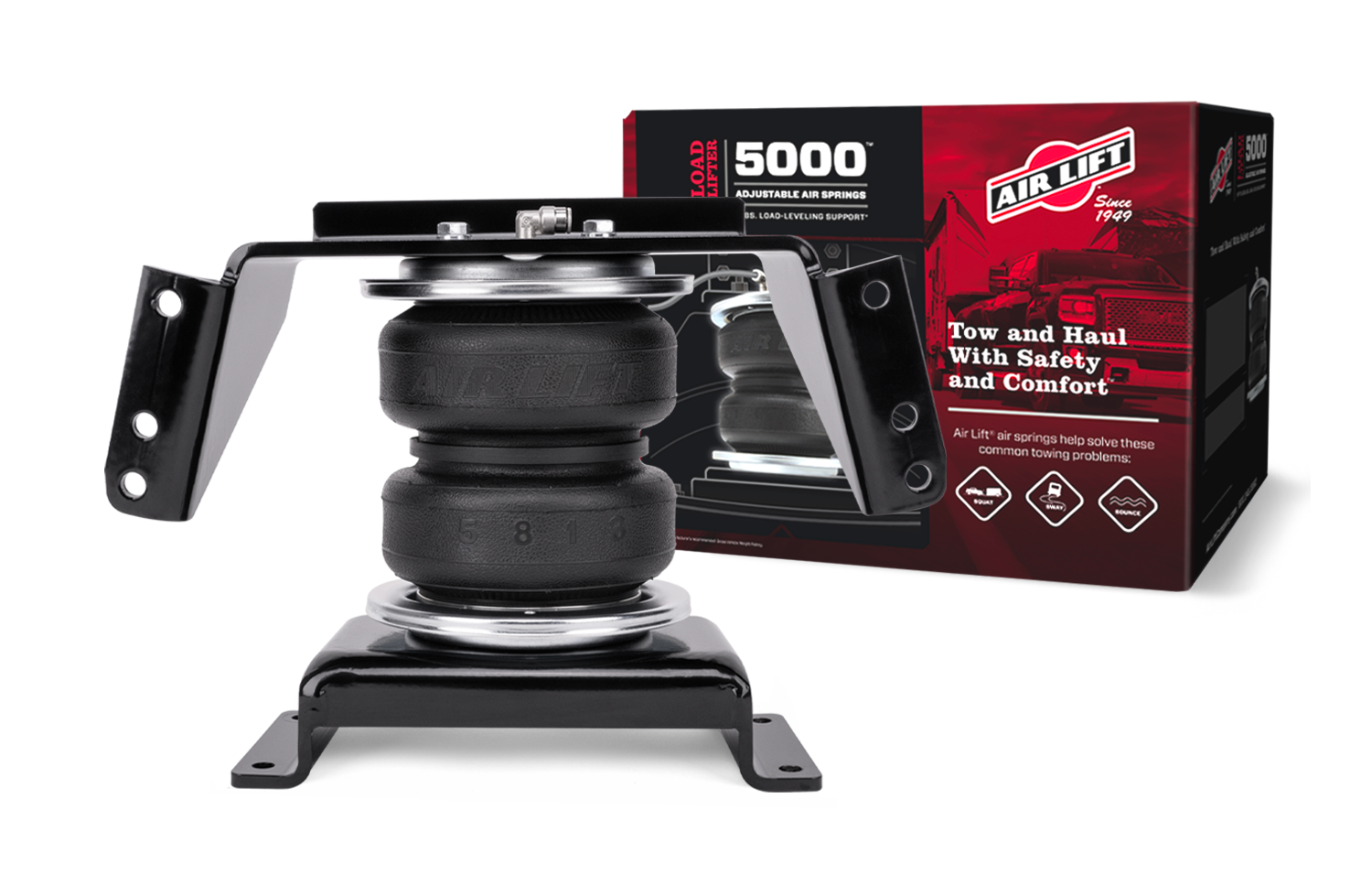
A common phrase in the insurance industry is to ‘build back better.’ The phrase is meant to emphasize the need to — after a catastrophic loss, such as a home or building being completely destroyed — rebuild the structure with better fire or water resistance materials. The point is so that such a loss event doesn’t happen again, or damage is significantly reduced.
In an age where floodings are becoming more common and wildfires rage on with greater intensity, the process would guard against bigger losses, reducing claims and the amount insureds need to pay in premiums.
The automotive aftermarket could apply the same theory coming out of the COVID-19 pandemic. While shops were still open and serving customers, business did change. From customer expectations to experience, it’s not business as usual. Things have changed.
While the pandemic isn’t over, things are certainly better than in 2020. Many industries are using this emergence of a new normal as the impetus to change the way they do business and explore ways to improve and adapt to new realities.
To help shop owners better run their business, service advisors better serve customers and technicians better work in the shop, here is a compilation of insights offered by shop coaches and aftermarket experts.
Service advisors
According to Bryan Stasch, vice president of product and content development at the Automotive Training Institute, the service advisor has the most important job in a shop. They’re the first person a customer sees when they walk in and are often the last person they deal with on the way out. And when a customer calls, it’s the service advisor who typically answers the phone.
“Your attitude, your character, your emotional state is going to have a huge impact on the result at the end of the day, week, month or year,” he said at this year’s Midwest Auto Care Alliance’s Vision Hi-Tech Training & Expo near Kansas City.
Service advisors are expected to be problem-solvers — for both customers and the shop’s technicians.
For any shop owner who disagrees, Stasch has a simple message: “Service advisors have more control over sales and profitability and the bottom line of that business than you ever do.”
As such, service advisors should view their role more in line with being a business manager. They manage workflow, car count, scheduling and profit margins. “If you’re the one that builds estimates, sells tickets and/or controls an effective labour rate, you’re a business manager,” Stasch said.
Not to mention a salesperson. They’re answering calls, building estimates, selling the service and more. “You guys are salespeople and you are directly responsible for sales making those sales profitable, keeping your customers happy and coming back for return visits,” Stasch said.
“Customers always assume that you have the tools that you need to do the job right every single time. No customer out there thinks, ‘I bet this shop has really good equipment to accurately diagnose my car on this one problem.’”
Shop owner
Customers are looking for shops that stand out. They know you offer great repairs — everyone does that.
Indeed, if your pitch to new customers is that you fix cars right the first time or that you’re better than the guy next door, then you need to change that as soon as possible. Customers already expect that you can fix their vehicle. They figure that you’re competent. Those are basic expectations.
“We all get it. I get it. But to a consumer? Low-level expectation. Do not hang your hat on low-level expectations,” Stasch said.
Saying your quality of work speaks for itself is just lazy marketing, noted David Avrin, a customer experience and marketing consultant, at the same MWACA conference. That’s what everyone else is saying — except for those who are marketing themselves better than you.
“We got to highlight those things that are different and better,” he said, adding that when everything is equal people shop based on price and proximity.
Even promoting that you have the right tools to do the job is considered elementary to consumers, noted Craig O’Neill, vice president of training at autotext.me.
“Customers always assume that you have the tools that you need to do the job right every single time. No customer out there thinks, ‘I bet this shop has really good equipment to accurately diagnose my car on this one problem,’” he said.
And they won’t show much excitement that you have a particular tool in your bays. “It’s not going to delight the customer that we have the latest and greatest General Motors OE scan tool to do the reprogramming calibration,” O’Neill added.
So how can shops stand out? Go huge with your warranty, Stasch recommended as one solution.
“I’m a believer in the five-year warranty, unlimited mileage,” he said.
This helps when attracting customers who will only take their vehicle to the dealer where they believe they will get better parts put on their vehicle.
“So with those customers, you have to work a little harder to sell your company and why you’re better,” he said.
And that’s where the warranty comes into play. Most aftermarket professionals will agree that if a part is going to fail, it’ll most often be within the first month — and most certainly within six months. So why offer a three-year warranty? Make it five. That sounds great to the customer, especially when your competitors are offering warranties for two or three years with limited mileage.
Stasch recalled one key piece of marketing advice that has stuck with him throughout his career. “I had somebody tell me: ‘Do not do what your competition is not doing; Do what your competition is not willing to do.’”
That adds to the value proposition of your shop. That warranty tells the customer “they will never replace the water pump ever again. We are believers in lifetime warranties on a lot of things.”
“We’re one of the only industries that doesn’t do quality control.”
Technicians
For lead technicians, establishing set procedures and processes is essential to a well-run shop. That means having plans in place from the moment the customer’s vehicle enters the bay to when you have it ready for them to pick up.
To start off, lead technicians need to establish a standard inspection process. Otherwise, a shop with five different technicians will look at vehicles in five different ways. A uniform process for vehicle inspections means everyone goes through the process in the same way.
The inspection process “is probably one of the biggest black holes in every shop,” according to Matt Lachowitzer, a coach with Transformers Institute and owner and founder of Matt’s Automotive Service Center.
At the Kansas City conference, he recommended getting all techs together to discuss how to bring more consistency into how issues are interpreted.
“Do all the inspections together and you talk about it. Every tech interprets a leak, a drip, a seam, everything, differently,” Lachowitzer said. “What’s a 10 out of 10 one day may be a four out of 10 the next day. How do you bridge that gap? That’s understanding that training [on] your inspection process so that everybody’s on the same page all the time. It’s not always going to be consistent, but you can start by training on it and you need to make it more consistent. That’s the Number 1 thing.”
Tell them what the minimum is for the acceptable standard, how they should be doing certain things and the order in which it is done, he added.
What can often drive technicians crazy is when an inspection is ordered in a way that looks good to the customer but makes no sense to the technicians. “And as a technician, you say, ‘Why did they put this together this way? Why am I doing tires when there’s all this stuff over here?’” Lachowitzer said.
At the other end, technicians need a quality control process to ensure the customer’s vehicle is properly ready for them when work is completed.
This is important because one slip up — something as simple as not wiping down the steering wheel — can not only mean an unpleasant conversation between the customer and the service advisor, but also the customer taking their business elsewhere.
“Did I ask you to diagnose it? No. Have a moment with the car. Look at the current miles, look at the oil change sticker on there. Take a picture of the entire IPC.”
Mistakes happen — everyone is human. But not seeing a new oil change sticker makes the customer wonder if you even changed their oil, said Chris Cloutier, founder of autotext.me and co-owner of Golden Rule Auto Care.
Cloutier’s background is in software development, an industry where nothing gets released without extensive quality control checks. In automotive repair, though, it’s a different story.
“We’re one of the only industries that doesn’t do quality control,” he said.
“How many stickers do we miss? How many gloveboxes are still on the floor after doing a cabin air filter? How many rags, how many flashlights [are left behind]? How many oil caps are missing?” observed Clint White, a service advisor coach and shop consultant with CWI. “I could keep going. How many times [have you] sold a thing and it didn’t get put on the car?”
Cloutier developed a list for his shop. When he put the list into action by checking every vehicle, he found that vehicles were failing the quality control check upwards of 60% of the time. That’s not acceptable, he said.
“You know how much time it takes to go check out a car real quick? To walk around it real quick? To open it up, turn on the engine, make sure there’s no grease and wipe it down real quick?” he asked.
He timed himself. The process to about five to seven minutes. “Five to seven minutes is still a lot of time you’re [spending] on every car. But what does it cost you to buy a new customer?” he asked.
Doing this is a competitive advantage for his shop. “We let every customer know before this car leaves that somebody has looked at it, and we’ve guaranteed that we’re going to get that car back to you in better shape than it came in,” he said. “If you’re not doing QC process, you should.”
So who should do it? Not the technician who worked on the car, experts agreed. Another technician or the service advisor can run through the list. Some shops hire someone to do this as their only job.
White understands pushback from shop owners who say they pay their advisors to be on the counter. “I know you do,” he acknowledged. “How about you give your customer a better experience?”
Just have them turn the car on, for example. “Hear anything weird?” White noted as a key question. “Did I ask you to diagnose it? No. Have a moment with the car. Look at the current miles, look at the oil change sticker on there. Take a picture of the entire IPC (instrument panel cluster).”
The point is, Cloutier stressed, someone should be making sure everything is right with the vehicle before the customer gets in and finds something wrong.
“And what I will tell you is this: If it isn’t written down, it doesn’t exist.”
SOP
Much of this advice leads to one important item needed in every shop: A standard operating procedure.
There is nothing that a shop owner does in their business for which there shouldn’t be a standard operating procedure in place, according to Bill Haas, owner of Haas Performance Consulting LLC, dedicated to the automotive service and repair industry.
“SOPs are what give us that defining of the repeatable tasks to give us that consistent outcome,” he observed in Kansas City.
If you’re a shop owner who thinks that because everything is in your head that your business is fine, you’re wrong. Staff can’t get in your head, Haas said, and can’t know exactly how you want everything to run.
“And what I will tell you is this: If it isn’t written down, it doesn’t exist,” he said. “So if it’s truly an SOP, if it’s truly a process, if it’s truly something that you want your people to follow — that repeatable task to give us a consistent outcome — it has to be written down. If it’s not written down, it doesn’t exist.”
This article originally appeared in the July/August 2022 issue of CARS magazine












Leave a Reply